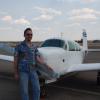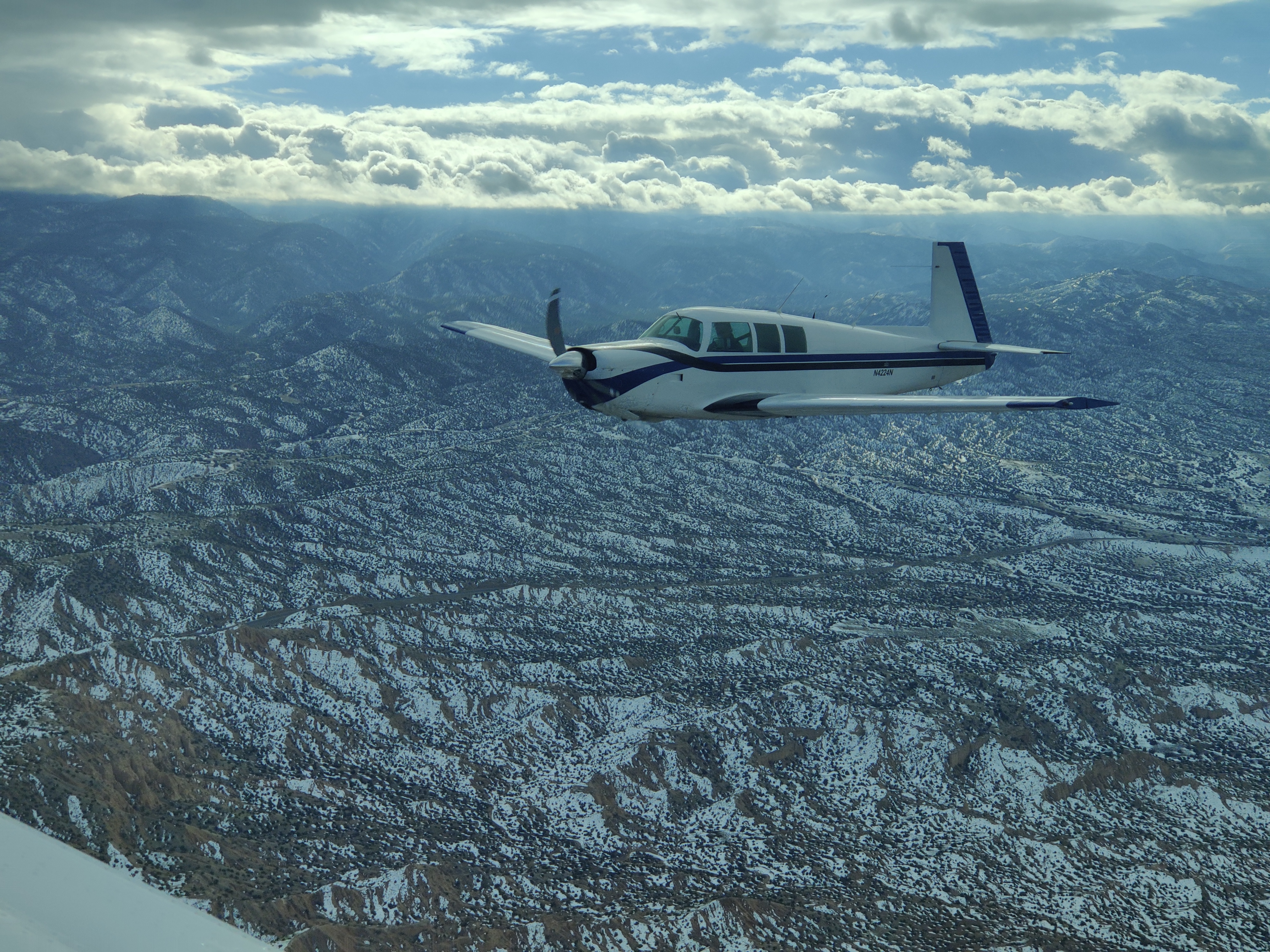-
Posts
57 -
Joined
-
Last visited
-
Days Won
1
Content Type
Profiles
Forums
Blogs
Gallery
Downloads
Media Demo
Events
Everything posted by Comet
-
My Mooney is 4 months older than me!
-
I got my glider license just before the pandemic shut everything down. Kept me from doing any soaring last season, but I hope to take it up again when the lapse rates look better. I found that glider flying is some of the most satisfying time you can have in an aircraft.
-
When I got my last iPad (several years ago), I got a Pivot case. You won’t find a simpler system for putting the iPad in and taking it out, and you don’t have to take it out of the case. A little expensive (compared to alternatives), but well worth it! https://pivotcase.com
-
Yes! I’ll send you a PM...I’m the only one in NM that I know of...
-

Do you know a pilot killed in a fatal accident?
Comet replied to 201er's topic in Miscellaneous Aviation Talk
This is another statistical exercise. When you start flying, you only know a few pilots (maybe a few thousand hours total), so the likelihood of 1 is low. After you’ve been around awhile the pilots you know have hundreds of thousands of hours (maybe millions for professional pilots). Number 2 should always be 100%; most (if not all) active CFIs s know someone. I’ve had CFIs who have discussed it as a reminder that what we do is dangerous. One day we will all take our last flight; our job as pilots is to work hard to make sue it also isn’t our last day on earth! -
Late to the topic, but Paul Dwyer in Santa Fe has quite a bit of time in Mooneys (not sure about K time). http://www.sierraflying.com
-
I was assuming best glide listed in my POH, not a rigorous L/D max vs. minimum sink airspeed. I’d love to see a polar for a Mooney (lots of armchair flying could be had). My G-CFI always mentioned the similarity of the laminar flow wing of a Mooney compared to a glider....still, 30:1 ratio is much different than 12:1!
-
Given 100 MIAS best glide speed, I figure you’d need a 7-8 kt thermal to maintain altitude. might be fun to get into a good mountain wave...
-
2020 -Commercial glider add on (pre COVID)...but didn’t get to fly gliders once the pandemic kicked off ☹️ -trips weren’t really on the menu...but I did get the restricted telephone operator and a radio license for the plane (I was optimistic in April) 2021 -work on CFI; including tail wheel endorsement, spin endorsement, and take FOI and FIA tests. -long trip with the older kids...either Oshkosh (again) or Alaska
-

M20E/F in high altitude short runway
Comet replied to rene86mx's topic in Vintage Mooneys (pre-J models)
My home airport is at 7171’; I typically rotate at 1800-2000’. Your concern may be the local terrain. At 10k’ DA, climb rate may be as low as 400-500 ft/min. One year when I was leaving for Oshkosh in the afternoon, DA was over 10k’ and it seemed to take forever to get to my cruising altitude of 11.5k’. -

Commercial Accuracy Landings in an M20E (or C, F, G)
Comet replied to Pilot boy's topic in Vintage Mooneys (pre-J models)
The 180 power off is all about energy management (just like flying a glider). If you are high energy (high and fast), you can use slips and flaps to dissipate energy (I would not put in any flaps or at most TO flaps until you see what your energy state is). If you are consistently high energy, you may want to fly further downwind to dissipate some energy. If you find yourself with low energy, pulling the prop back makes a huge difference. Iuse the same speeds as a normal landing. The trick is knowing the aim point so the float will be predictable. If you’re consistent (especially with speed), once in ground effect, the float will be consistent. If you’re at idle for the accuracy landings, it should be the same as the 180s once you get to the flare. I found the 180 power off landing the most demanding, but once you nail it, it is so gratifying. Good luck! -
The Canadian books for my plane are much larger than the ones for while it’s been in the US...even though it was registered in Canada for many fewer years.
-

C or E model owners near Albuquerque?
Comet replied to Usafwolfe's topic in Vintage Mooneys (pre-J models)
KLAM is a great little airport...all takeoffs on 9; all landings on 27; restricted area directly south of the airport; prevailing wind is a direct crosswind; mesas can produce LLWS;...oh, and high DA! In the terminal building, there’s a Aircraft Carrier KLAM stamp for your logbook if you are so inclined. I sent you a PM so we can connect. -

C or E model owners near Albuquerque?
Comet replied to Usafwolfe's topic in Vintage Mooneys (pre-J models)
I have an F and I’m at KLAM...besides, if you see a K first, you won’t want anything else! -
When I put in my Surefly, most places didn’t have half harnesses in stock...New Horizons did and got it to me in a few days. https://www.newhorizonsmaggieaircraftignitionsystems.com/maggie-harness-order-form
-
About the same time that I bought the airplane, there was a fatal accident at a nearby airport (higher altitude)...makes you think (and learn from others). A couple of months after I bought the plane, there was a fatal accident at my airport. The local flight instructors put together a good resource for the airport. Always, a licence to learn. https://f8fcd52a-a-62cb3a1a-s-sites.googlegroups.com/site/lamairport/airport-info/KLAM_Pilot_Warning.pdf?attachauth=ANoY7covjD11zC5M6-s0faEhn4vat8zQ7ZHITI6D2OF9LxazDLqhiqJVeDR1v9BcdL1biL3YVkBK9JclSCGkciv3zh-JhHszrXR59IF2eXErA5rxdI8FEDh_T6uSbG45LJdRln1ezeUDUbjK8HGKOvOAbxYQw_R5YW_eoQqBIwcqbq4nufJXKP7CJYGRP8nfpv7q9sNAKe4PTscD60sW9SQsuAI9wtG5f4aBG1O-AFoDT41wx-eteyk%3D&attredirects=0
-
All commercial maneuvers are about planning and adapting. Look at where are you at 45 degrees; adapt to be at the right point at 90 and 135 and 180. For me, that meant changing pitch and bank angle to get to where I needed to be. I seem to remember doing them (in an F) at 18”, 2500 rpm, but ~120 mph (but also typically at 9500’). My commercial instructor always said that if a lazy 8 wasn’t boring, I was doing it wrong!
-
I have a M20F based at an airport with an elevation of 7171’. DA in the summer is usually well over 9000’; afternoons are often over 10. Once DA is over 10k, I run the numbers and decide if I really need to go. Obviously, lean the mixture during run up for best power (I still find it weird to go full rich at low elevations). The runway is 6000’, but I still usually use Short field technique; hold breaks until MP is over 20”, then release. I pass 60 mph at ~1000’, if I don’t rotate by 2000’, I would reject the TO (hasn’t happened yet). Gear and flaps up with sustained positive rate (~85 mph); the terrain drops off after the end of the RW, so after I get to ~100’ AGL, I’ll accelerate to 110 or so to help with engine cooling. When I go to nearby airports (which are lower, but don’t have the terrain advantages), I’ll usually climb at 90 mph up to pattern altitude.
-
I’ve been pondering a similar question...how much water would cause a problem? 8 gal/hr is about 30.2 L/ hr (in sensible units); this is ~8.2 ml/sec . How long will it take to cause a problem? My sample cup is only ~30 ml; if I have 10 ml of water, will it cause complete stoppage? Should we be slumping more than 10-20 ml?
-
Going from steam gauges to a dual G5, it’s incredible how much information is displayed on them. Much of the information is small flags, it’s really a matter of knowing what each means (for me it took awhile). The GS is great and much more accurate than the old analog instrument.
-

six gear collapses & gear ups in one week
Comet replied to philiplane's topic in Mooney Safety & Accident Discussion
I’ve had the “opportunity” to use the manual gear extension procedure twice (for real). Both times, I had an instructor along. The first was during my transition training (switch failed). The second time I was working on my commercial certificate doing pattern work and we didn’t catch it until we were about to turn base and noticed something didn’t feel right. Mechanic didn’t find anything, but I was having intermittent issues with the voltage regulator. The second time really shook me up. Would I have caught it if I hadn’t had another pilot or if the workload had been higher? I changed my procedure so that my hand doesn’t come off the gear switch until I verify that the gear is down is down and locked. The DPE complimented me on the practice during my check ride. -
https://www.avweb.com/aviation-news/military-aviation/a-10-makes-emergency-gear-up-landing/ I guess it does happen to the best of us...
-
Sure it would be possible (in Al or Ti). Most as printed parts are very rough, so they would need post-processing to get the close tolerances needed for a cylinder (what they usually neglect to tell you when they show you the medical part with a mirror finish).. Metal AM parts have more inclusions and voids than cast metal, and they fail differently as well. The ideal would be to get CAD files for any part you might need, have it printed at a service bureau and install it as an owner supplied part. I’m not sure I would trust an AM part for a safety critical component. GE has invested a fortune to make the nozzles; including very stringent QA on not only the feedstock material, but also the additive machine itself (and they have hundreds; no two are identical).
-
The current OSHA limit is 85 DB averaged over 8 hrs. For 95 DB, the limit is 4 hrs exposure. The science underling the exposure limits has expanded over the past 30 years. Most headsets will reduce exposure by 10-20 DB, putting it within OSHA limits (which aren’t required if You aren’t being paid). I agree that if you are flying with young ones, reduce their exposure as much as possible. my workplace hearing conservation hasn’t detected any reduction in my hearing in nearly 10 years of flying...of course your watch/phone isn’t a calibrated device... Pilot thoughts only, not an IH.
-
When I did my CPL (at ~850 TT ~600 in the Mooney), I was worried about these requirements as well. If i remember, I took off from KLAM, got gas at KSAF and did a t&g in Zuni on the way to DVT ( solo to a concert, my wife doesn’t like Metallica for some reason!). When I did my check ride, the DPE verified total numbers but never asked about specific flights I was using for these more specific requirements.




